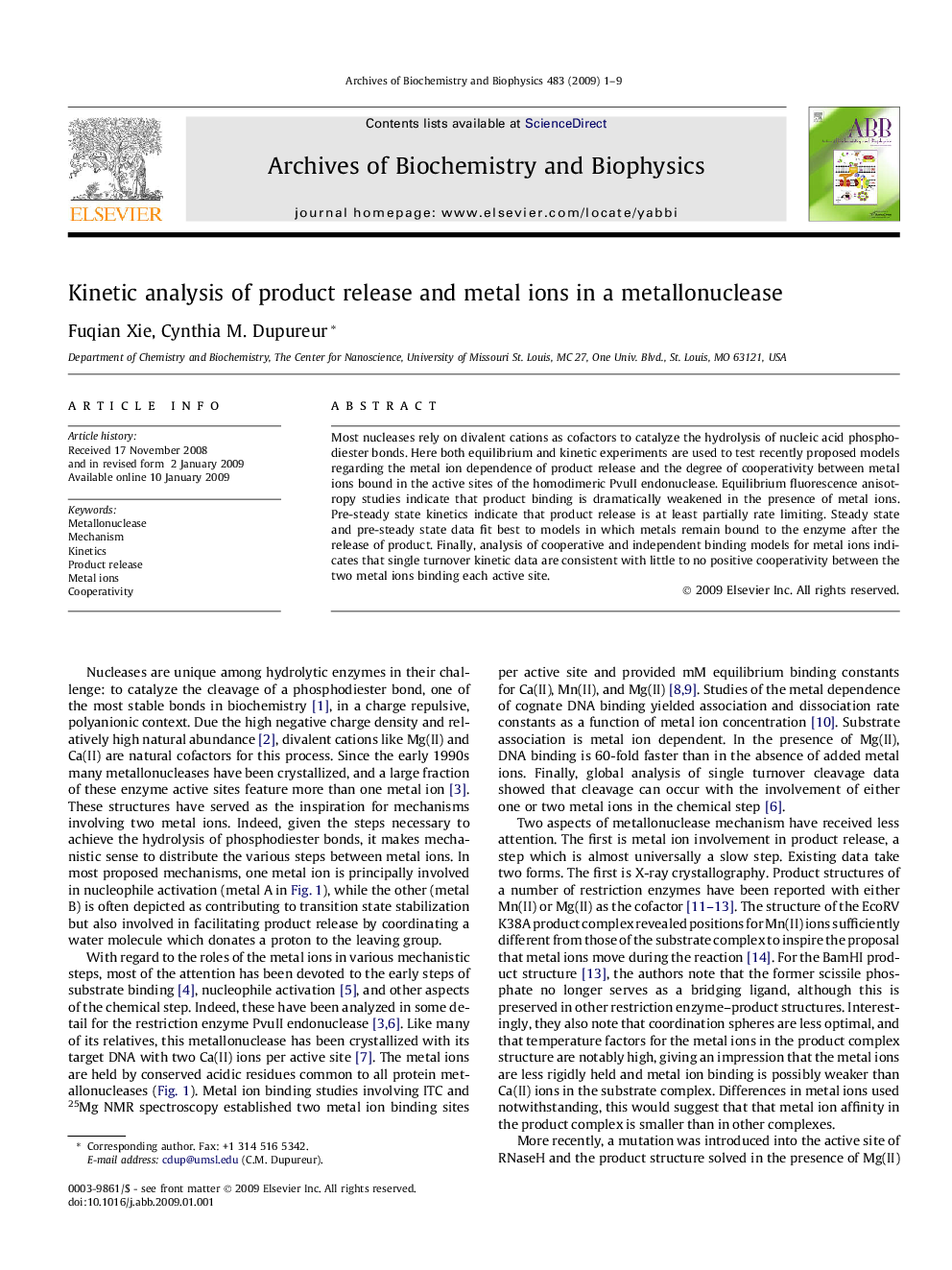| Article ID | Journal | Published Year | Pages | File Type |
|---|---|---|---|---|
| 1926465 | Archives of Biochemistry and Biophysics | 2009 | 9 Pages |
Abstract
Most nucleases rely on divalent cations as cofactors to catalyze the hydrolysis of nucleic acid phosphodiester bonds. Here both equilibrium and kinetic experiments are used to test recently proposed models regarding the metal ion dependence of product release and the degree of cooperativity between metal ions bound in the active sites of the homodimeric PvuII endonuclease. Equilibrium fluorescence anisotropy studies indicate that product binding is dramatically weakened in the presence of metal ions. Pre-steady state kinetics indicate that product release is at least partially rate limiting. Steady state and pre-steady state data fit best to models in which metals remain bound to the enzyme after the release of product. Finally, analysis of cooperative and independent binding models for metal ions indicates that single turnover kinetic data are consistent with little to no positive cooperativity between the two metal ions binding each active site.
Related Topics
Life Sciences
Biochemistry, Genetics and Molecular Biology
Biochemistry
Authors
Fuqian Xie, Cynthia M. Dupureur,
